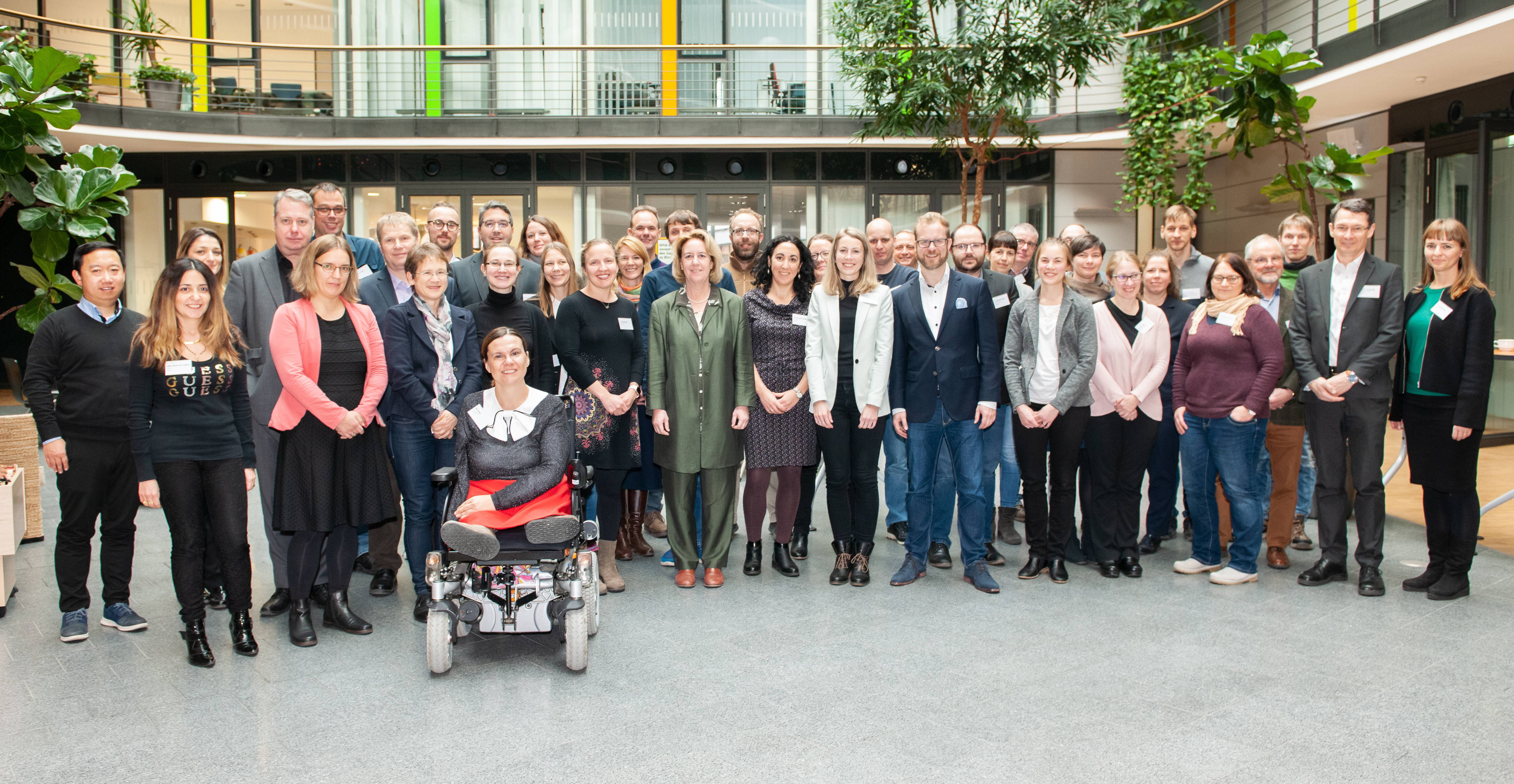Making novel therapeutics safer: Interdisciplinary EU consortium develops innovative model systems for the evaluation of immunomodulating therapeutics
The Fraunhofer Institute for Interfacial Engineering and Biotechnology IGB participates in the EU project imSAVAR to develop innovative model systems for the evaluation of immunomodulatory therapeutics. The institute coordinates the development of novel immunocompetent in-vitro models with a focus on microphysiological systems, especially organ-on-chip platforms, as well as on cell-based reporter gene assays with immune receptors. Fraunhofer IGB also leads the Management work package and is part of the Project Management Office together with Fraunhofer IZI.
The development of immunomodulatory agents and therapies has received fresh impetus following the latest successes in immuno-oncology. And cancer medicine is not the only area where cell and gene therapies are increasingly taking hold as alternatives or complementary to classic, low-molecular drugs and biologicals.
A significant challenge facing the development of new therapies, however, is and remains their preclinical evaluation in terms of efficacy and safety. The greatest problem here is the complexity of the human immune system. When a person is ill, for example in the case of cancer, autoimmune or inflammatory diseases, the cells of the immune system interact differently to when a person is healthy. While preclinical tests have so far mainly looked at the basic toxicity of a new therapeutic agent in terms of the (healthy) immune system, there is a lack of non-clinical models that accurately capture the individual interactions of the human immune system in the pathogenic state.
The EU consortium imSAVAR (Immune Safety Avatar: nonclinical mimicking of the immune system effects of immunomodulatory therapies) is addressing this shortfall by coming up with new ways of examining immunomodulatory therapies. The aim here is to improve existing model systems and develop new ones in order to:
- identify adverse side effects of new therapies affecting the immune system,
- develop new biomarkers for diagnosing and predicting immune-mediated pharmacology and toxicities, and
- further explore toxicity mechanisms and the potential for their mitigation via therapeutic interventions.
The project hopes to lay the foundations for new Europe-wide standards in drug development.
The interdisciplinary imSAVAR consortium is made up of 28 international partners from 11 nations and is being coordinated by the Fraunhofer Institute for Cell Therapy and Immunology (Leipzig, Germany) and Novartis. Partners include university and non-university research facilities, pharmaceutical and biotechnology companies, as well as regulatory authorities.
Participation of Fraunhofer IGB
The Fraunhofer Institute for Interfacial Engineering and Biotechnology IGB coordinates the development of novel immunocompetent in-vitro models with a focus on microphysiological systems, especially organ-on-chip platforms. Together with partners from the University of Jena, University of Tübingen, Fraunhofer IWS, the LUMC and the University of Twente, existing organ models are being further developed and novel models are being developed. This new type of human model will open up the possibility of investigating immune mediated effects and toxicities in human tissue and thus to transfer the results directly to humans. In this way, animal experiments that are not able to replicate the complex human body, particularly human disease can be avoided. In addition to the organ-on-chip models, cell-based reporter gene assays with immune receptors will be developed and established. These new in-vitro assays are used to assess the efficacy, for example in immunomodulating drug screening, and the safety of new immunotherapies. In addition, corresponding reporter cells are also used in immunocompetent 3D skin models.
Fraunhofer IGB also leads the Management work package and is part of the Project Management Office together with Fraunhofer IZI. In addition, IGB coordinates the dissemination of project information and project results together with the Paul-Ehrlich Institute and Sanofi-Aventis.
Funding
This project receives funding from the Innovative Medicines Initiative 2 Joint Undertaking under grant agreement No 853988. This Joint Undertaking receives support from the European Union’s Horizon 2020 research and innovation programme and EFPIA.
Further information on the project will be available from February 2020 on the website www.imsavar.eu.
imSAVAR project consortium:
- BioSci Consulting, Belgium
- bluebird bio, Inc. United States
- Boehringer Ingelheim, United States
- Covance, United Kingdom
- Dynamic42 GmbH, Germany
- F. Hoffmann-La Roche Ltd, Switzerland
- Fraunhofer Institute for Cell Therapy and Immunology IZI, Germany
- Fraunhofer Institute for Interfacial Engineering and Biotechnology IGB, Germany
- Fraunhofer Institute for Toxicology and Experimental Medicine ITEM, Germany
- Fraunhofer Institute for Material and Beam Technology IWS, Germany
- Fraunhofer Institute for Molecular Biology and Applied Ecology IME, Germany
- Hannover Medical School (MHH), Germany
- IT for Translational Medicine S.A. (ITTM), Luxembourg
- Jena University hospital, Germany
- JDRF, United States
- Leiden University Medical Center (LUMC), The Netherlands
- Leipzig University, Germany
- Lund University, Sweden
- Merck KGaA, Germany
- Merck Sharp & Dohme Corp., United States
- Novartis AG, Switzerland
- Medical University of Innsbruck, Austria
- Paul-Ehrlich-Institut (PEI), Germany
- Sanofi, France
- Servier, France
- T-CURX GmbH, Germany
- Transgene SA, France
- University Hospital of Würzburg, Germany
- University Hospital of Tübingen, Germany
- University of Luxembourg, Luxembourg
- University of Oslo, Norway
- University of Twente, The Netherlands
 Fraunhofer Institute for Interfacial Engineering and Biotechnology IGB
Fraunhofer Institute for Interfacial Engineering and Biotechnology IGB